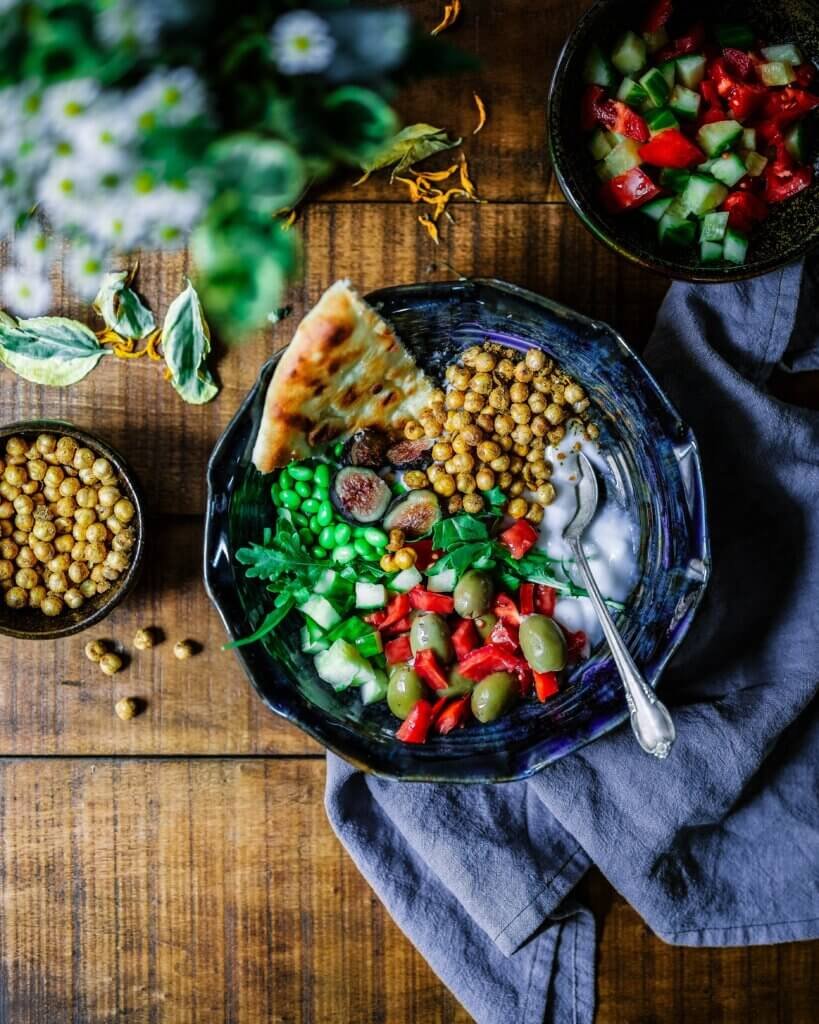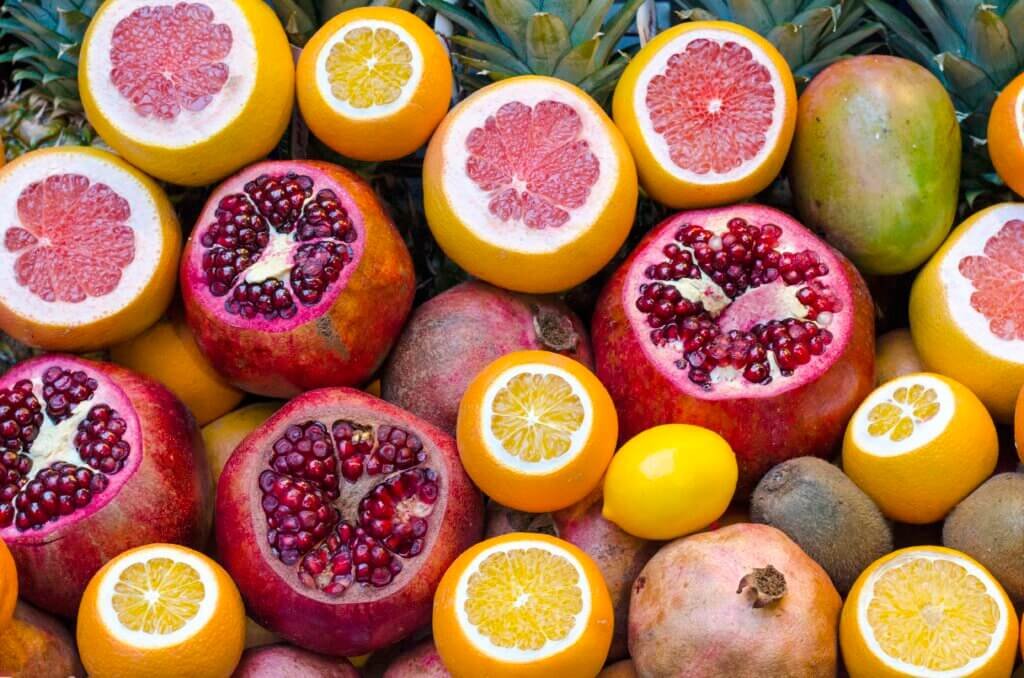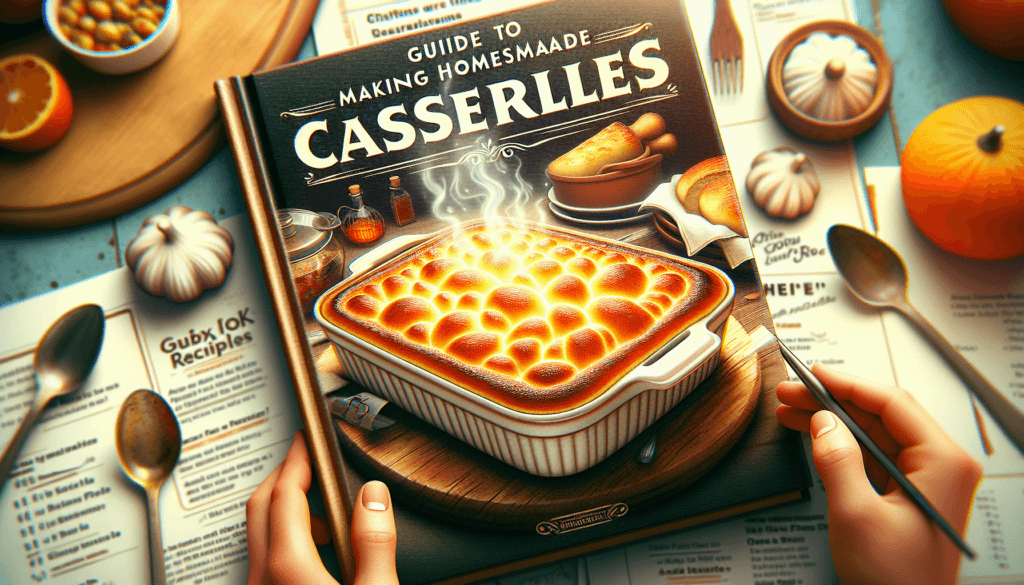If you’ve ever wanted to make mouthwatering homemade casseroles but have no idea where to start, this beginner’s guide is here to help you master the art of casserole-making. From classic comfort foods to creative culinary combinations, this guide will walk you through the basics, providing step-by-step instructions and helpful tips along the way. With easy-to-follow recipes and essential cooking techniques, you’ll soon be creating delicious casseroles that will impress your family and friends. So grab your apron and get ready to embark on a culinary adventure that will leave everyone begging for seconds!

Choosing the Right Ingredients
Quality Ingredients
When it comes to making delicious homemade casseroles, starting with quality ingredients is key. Opting for fresh, high-quality ingredients will enhance the flavors and overall quality of your casserole dish. Look for fresh vegetables, ripe fruits, and well-marbled meats to ensure a tasty and satisfying outcome.
Fresh vs Frozen Ingredients
While fresh ingredients are generally preferred, frozen ingredients can also be a convenient option. Frozen vegetables and fruits can be a great time-saver and often retain their nutritional value since they are frozen at their peak freshness. However, be sure to thaw and drain frozen ingredients before incorporating them into your casserole to avoid excess moisture.
Protein Options
When choosing proteins for your casserole, the options are vast. Whether you prefer chicken, beef, pork, fish, or even tofu, selecting proteins that complement the flavors of your chosen recipe is crucial. Consider the cooking time and texture of each protein to ensure it will work well in your casserole.
Vegetable Options
Vegetables not only add color and nutrition to casseroles but also contribute unique flavors. Root vegetables like carrots and potatoes provide texture and substance, while leafy greens like spinach and kale add a burst of freshness. Experiment with different vegetables to find combinations that suit your taste preferences and dietary needs.
Prepping the Ingredients
Washing and Chopping Vegetables
Before incorporating vegetables into your casserole, be sure to wash them thoroughly to remove any dirt or pesticides. Chopping vegetables into uniform sizes will ensure even cooking and distribution throughout the casserole. Take your time to chop them into bite-sized pieces or slices, depending on the recipe’s requirements.
Cooking and Shredding Proteins
If your recipe calls for cooked proteins, such as chicken or beef, be sure to cook them thoroughly before incorporating them into the casserole. This not only ensures food safety but also enhances the overall flavor and texture. Shredding proteins like cooked chicken or beef can provide a desirable texture to the casserole, making each bite more enjoyable.
Cheese Grating
Cheese is a beloved ingredient in many casseroles, offering a delightful creamy and melty texture. To make it easier to incorporate into your casserole, try grating your cheese before layering it. Grated cheese not only distributes more evenly but also melts quicker, ensuring a gooey and delicious final result.
Dicing Onions and Garlic
Onions and garlic are aromatic ingredients that add depth and flavor to your casserole. To ensure the flavors blend seamlessly into the dish, it’s important to dice onions and mince garlic finely. This way, they will evenly disperse throughout the casserole, infusing every bite with their savory goodness.
Selecting the Right Tools
Casserole Dish Sizes
Choosing the right size of a casserole dish is pivotal in achieving a perfectly cooked casserole. Different recipes may call for different dish sizes, so it’s essential to have a variety of options on hand. A dish that is too small may result in overflow or uneven cooking, while a dish that is too big can lead to a thin and overcooked casserole.
Mixing Bowls
Having an assortment of mixing bowls in various sizes will make the preparation process much smoother. Mixing bowls allow you to combine ingredients, toss them together, or coat them with seasonings and sauces efficiently. Choose bowls that are sturdy, heat-safe, and easy to clean for convenience and durability.
Cutting Boards and Knives
Investing in high-quality cutting boards and knives is essential for prepping ingredients effectively and safely. Opt for a cutting board that is spacious, easy to clean, and preferably made of wood or plastic, as they are less likely to dull your knives. Sharp and durable knives will make chopping vegetables and proteins a breeze, ensuring precision and ease throughout the cooking process.
Graters and Slicers
Graters and slicers are invaluable tools when it comes to quickly prepping ingredients for casseroles. A box grater can be used to grate cheese and vegetables, while a mandoline slicer can slice vegetables uniformly. These handy tools save time and effort, allowing you to achieve consistent results in your casserole.
Understanding Casserole Basics
Importance of Layering
Proper layering is crucial in creating a well-balanced and visually appealing casserole. Start with a base layer, such as pasta or rice, then add a protein layer, followed by vegetable layers, cheese layers, and any other desired ingredients. This layering technique ensures that every spoonful contains a harmonious blend of flavors and textures.
Choosing the Right Binder
Binders are essential ingredients that hold the casserole together. Common binders include eggs, cream, sour cream, tomato sauce, or a combination of these. When selecting a binder, consider the recipe and the desired texture. For a creamier casserole, opt for dairy-based binders, while tomato sauce can add a tangy and flavorful element.
Seasoning and Spices
Seasoning is what brings a casserole to life, so don’t be afraid to experiment with different herbs, spices, and seasonings. Classic options like salt, pepper, garlic powder, and onion powder are versatile and work well in most casseroles. Additionally, consider incorporating fresh herbs like parsley or basil for a burst of freshness and complexity.
Cooking Times and Temperatures
Different casseroles require different cooking times and temperatures, so it’s important to follow the recipe instructions closely. Cooking times can vary depending on the ingredients used and the size of the casserole dish. To ensure your casserole is properly cooked, use an oven thermometer to monitor the internal temperature and adjust cooking times accordingly.

Exploring Casserole Variations
Classic Casseroles
Classic casseroles, like green bean casserole or tuna noodle casserole, have stood the test of time for their comforting flavors and simplicity. These dishes often feature pantry staples and are a great starting point for beginners. Experiment with different classic casseroles to discover your favorites and add your own unique twist.
Vegetarian and Vegan Options
For those following a vegetarian or vegan lifestyle, casseroles offer a plethora of options. Replace meat with plant-based proteins like tofu or tempeh, and substitute dairy products with vegan alternatives such as nut-based cheeses or coconut milk. Vegetarian and vegan casseroles can be just as flavorful and satisfying as their meat-based counterparts.
Enchiladas and Mexican Flavors
If you’re a fan of Mexican cuisine, enchilada-style casseroles are a must-try. These casseroles often feature layers of tortillas, savory proteins, and enchilada sauce, topped with a generous amount of cheese. You can customize the filling with ingredients like peppers, corn, beans, and spices to create a vibrant and flavorful Mexican-inspired casserole dish.
Breakfast and Brunch Casseroles
Casseroles aren’t just for dinner – they can also make a delicious addition to your breakfast or brunch spread. From the classic breakfast casserole with eggs, bacon, and cheese to sweet options like French toast casseroles, there are endless possibilities for starting your day with a hearty and satisfying dish. These casseroles can often be prepared in advance, making them perfect for busy mornings.
Following Step-by-Step Recipes
Macaroni and Cheese Casserole
Macaroni and cheese casserole is a timeless classic loved by many. To create this comforting dish, start by cooking macaroni pasta according to package instructions. In a separate saucepan, melt butter and whisk in flour to create a roux. Gradually whisk in milk and cook until the mixture thickens. Add shredded cheese and stir until smooth and creamy. Combine the cooked macaroni with the cheese sauce and transfer to a greased casserole dish. Top with additional cheese and bake in a preheated oven until golden and bubbly.
Chicken and Rice Casserole
A simple and satisfying chicken and rice casserole is perfect for a weeknight meal. Begin by seasoning boneless, skinless chicken breasts with salt, pepper, and any desired spices. Sear the chicken in a skillet until golden brown, then remove and dice into bite-sized pieces. In the same skillet, sauté onions and garlic until fragrant. Add uncooked rice, chicken broth, and the cooked chicken to the skillet, then cover and simmer until the rice is cooked and the flavors are melded together. Pour the mixture into a casserole dish and bake until the top is golden and crispy.
Vegetable Lasagna Casserole
Vegetable lasagna casserole offers a healthier twist on the traditional meat-based lasagna. Start by sautéing a variety of vegetables, such as onions, bell peppers, zucchini, and spinach, in olive oil until tender. In a separate bowl, combine ricotta cheese, grated Parmesan, and beaten eggs to create the creamy filling. Layer the sautéed vegetables, lasagna noodles, and cheese filling in a greased casserole dish. Repeat the layers until all ingredients are used, ending with a layer of cheese. Bake in a preheated oven until bubbly and golden brown.
Tuna Noodle Casserole
To make a classic tuna noodle casserole, begin by cooking egg noodles according to package instructions. In a skillet, sauté onions and garlic until softened. Add canned tuna, cream of mushroom soup, frozen peas, and any desired seasonings to the skillet, stirring until well combined. Drain the cooked noodles and fold them into the tuna mixture. Transfer to a greased casserole dish, top with breadcrumbs and shredded cheese, and bake in a preheated oven until the top is crispy and golden.

Tips for Making the Perfect Casserole
Properly Seasoning the Layers
To ensure every layer of your casserole is bursting with flavor, season each component individually. Sprinkle salt, pepper, or desired spices on vegetables, proteins, and even pasta or rice before incorporating them into the casserole. This will help the flavors permeate throughout the dish, resulting in a well-balanced and delicious final product.
Covering and Baking
Covering your casserole while baking can help retain moisture and prevent the top from becoming overly browned or crispy. Use aluminum foil or a casserole dish lid to cover the dish before placing it in the oven. Towards the end of the baking time, remove the cover to allow the top layer to crisp up and develop a beautiful golden color.
Allowing Resting Time
After removing your casserole from the oven, allow it to rest for a few minutes before serving. This resting time allows the flavors to settle and the layers to set, making it easier to slice and serve. It also helps prevent the casserole from falling apart or becoming too runny when serving.
Serving and Storing
When serving your homemade casserole, consider adding a garnish or fresh herbs on top to enhance its visual appeal. Serve the casserole directly from the dish or transfer it to a serving platter for an elegant presentation. Leftover casserole can be stored in an airtight container in the refrigerator for up to three days. Simply reheat individual servings in the microwave or reheat the entire dish in the oven for a comforting and convenient meal.
Making Ahead and Freezing Casseroles
Prepping in Advance
Casseroles are an excellent make-ahead option, allowing you to prepare them in advance and bake them when needed. You can assemble the casserole according to the recipe instructions, cover it tightly, and refrigerate it overnight. This way, when it comes time to bake, all you need to do is remove it from the refrigerator and place it directly in the oven.
Freezing and Thawing
Casseroles can also be frozen for longer storage periods. To freeze a casserole, make sure it is completely cooled before transferring it to a freezer-safe container. Label the container with the name and date, and place it in the freezer. When ready to eat, thaw the casserole overnight in the refrigerator before reheating.
Reheating Instructions
To reheat a frozen or refrigerated casserole, preheat the oven to the recommended temperature stated in the recipe. Place the casserole dish in the oven and bake until it is warmed through and the top is golden. Alternatively, you can reheat individual servings in the microwave, stirring occasionally to ensure even heating.
Shelf Life of Frozen Casseroles
Frozen casseroles can typically be stored for up to three months. However, it is recommended to consume them within one to two months for optimal flavor and texture. When in doubt, check for any signs of freezer burn or off flavors before consuming.

Troubleshooting Common Issues
Soggy Casseroles
Soggy casseroles can occur when there is excess moisture in the dish. To prevent this, make sure to drain any excess liquid from vegetables or proteins before incorporating them into the casserole. Additionally, avoid overcooking the casserole, as this can cause the ingredients to release more moisture. If you find your casserole is still too soggy, try increasing the baking time or temperature to further evaporate the excess moisture.
Dry and Overcooked Casseroles
Dry and overcooked casseroles can result from baking the dish at too high a temperature or for too long. Follow the recipe instructions closely and use an oven thermometer to ensure accuracy. If you find your casserole is drying out, consider adding a bit of broth or sauce to the dish prior to baking to maintain moisture.
Unbalanced Flavors
If you find that your casserole lacks flavor, it’s important to taste and adjust the seasoning throughout the cooking process. Take the time to season each layer individually to build depth of flavor. Additionally, adding a splash of acidity, such as lemon juice or vinegar, can help brighten and balance the overall taste of the casserole.
Burnt or Browned Tops
To prevent the top of your casserole from becoming overly browned or burnt, consider lightly tenting it with aluminum foil during the baking process. This will shield the top from direct heat while allowing the casserole to cook through evenly. If you desire a golden brown top, remove the foil during the last few minutes of baking for a beautiful finishing touch.
Experimenting and Creating Your Own Casseroles
Understanding Flavor Combinations
One of the most exciting aspects of making homemade casseroles is the opportunity to get creative with flavor combinations. Experimenting with different herbs, spices, and sauces can elevate the taste profile of your casserole. Consider complementary flavors, such as pairing thyme with chicken or rosemary with potatoes, to create unique and delicious combinations.
Measuring and Adjusting Ingredients
While following a recipe is a great starting point, don’t be afraid to adjust the ingredients to suit your personal taste preferences. Start with the recommended measurements, then taste and adjust throughout the cooking process. Remember, cooking is an art, and everyone’s palate is unique. Trust your instincts and have fun exploring new flavors and ingredients.
Balancing Texture and Color
In addition to flavor, texture and color play important roles in creating a visually appealing and appetizing casserole. Aim for a balance of crisp, tender, and creamy textures by incorporating a variety of ingredients. Similarly, consider using ingredients with vibrant colors to enhance the overall presentation of your casserole.
Recording and Improving Recipes
Creating your own casserole recipes is a wonderful opportunity to document and build upon your culinary creations. Keep track of the ingredients, measurements, and cooking techniques you use, making notes of any modifications or adjustments. By doing so, you can improve and refine your recipes over time, ensuring consistently delicious results.
With these tips and a bit of experimentation, you’ll be well on your way to mastering the art of making homemade casseroles. Whether you’re cooking for yourself, your family, or entertaining guests, these versatile and comforting dishes are sure to please. So grab your ingredients, roll up your sleeves, and enjoy the creative and delicious world of homemade casseroles!



